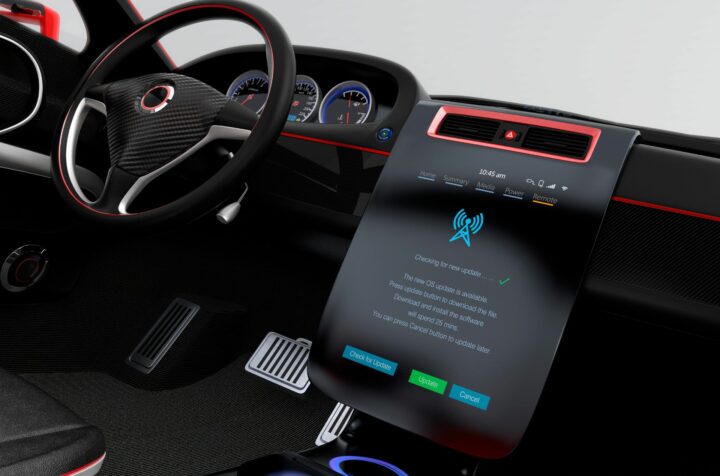The video game industry has never been more popular.
The technology behind many games and the near cinematic quality of the content is constantly improving. Gaming genres cater to every taste – from shooting games to role-playing, racing, sports, platforming, and dozens more. It’s a huge business with a truly massive global player base that is rapidly evolving into the biggest entertainment industry in the world.
One thing that is slow to evolve, however, is inclusivity. That is the addition and representation of multiple races, ethnicities, genders, physical abilities, sexual orientations, and more.
It’ll come as no surprise, but the go-to character design for the central hero firmly remains a straight, white, 30’s-something male. Minorities are often underused and clichéd. Women continue to be sexualized and predominantly portrayed as support roles. Even the ability to change a character’s look and gender can be limited; for example, you may be able to choose skin color, but facial features remain typically European, and body shapes often only come in three sizes. Disabilities? Someone may have a cool eye patch. Different sexual orientations? Again, clichéd or sensationalized.
There is definitely room for improvement.
A quick disclaimer: This article specifically looks at diversity in the US and EU video game industry. Statistics for Asia, India, Africa, the Middle East, etc., typically focus on player numbers and the amount of money each country makes. Not diversity.
This isn’t to say that all games lack inclusivity. Many game developers are making large strides to ensure that there are diverse characters and that stories include more than white protagonists. The Walking Dead featured a well-rounded black character as the lead. Hellblade: Senua’s Sacrifice not only had a main female character but also dealt with her mental illness. Apex Legends lets you play as a mixed-race, black, or gay character. The Last of Us Part 2 lets you play as the openly lesbian character, Ellie (alongside a diverse cast).
But when you consider that there are thousands of games made every year that either don’t include a diverse range of characters or worse, persist in using clichés and (often prejudiced) stereotypes, the industry is missing opportunities when it comes to attracting players.
This is important for the industry to not only continue its growth – but to better engage and keep players of all persuasions – while giving everyone something that straight, white, male players have enjoyed since day one: seeing themselves in the games they love to play.
The state of play
So, what does the industry look like today?
It’s continuing its massive expansion and is likely to earn nearly US$ 260 billion a year by 2025. For perspective, the entire global film industry in 2019 made 100 billion for the first time.
The US gaming industry alone generated over 66 billion dollars in 2020; though this was undoubtedly boosted by ongoing lockdowns from the Coronavirus pandemic.
Today, it boasts an active player base of over 2.7 billion people. 46% are female. 54% male. Consider that. Women are nearly 50% of all gamers. Yet, how many positive female characters are out there for them to play? Odds are most will only think of one – Lara Croft of Tomb Raider fame (and here we’re talking about the 2013 reboot, not the overtly sexualized original Lara).
Overall, the largest gaming population is within the Asia Pacific (China alone has 665 million players) with the United States coming in second.
Saying the industry is big business is a huge understatement. But imagine how bigger it could be if it were far more inclusive.
Changing with the times
Games were once nothing more than a bunch of pixels that vaguely resembled people and objects. Even later games like Sonic the Hedgehog or Super Mario offered little more than platforming with multiple obstacles and one large boss battle. Story elements were only cutscenes for specific sections and could only be watched passively. All with zero ability to customize characters or the experience.
Today, games can be incredibly immersive and, in many cases, truly cinematic in their approach. Games like The Witcher 3: Wild Hunt can take hundreds of hours to play, have a narrative similar to a novel, and enable your actions to change the story. One decision can lock you out of other storylines or dictate what happens to supporting characters. This makes it a very personal experience.
To see just how far the industry has come, compare 1979’s Atari Superman game (turn the sound down!) with 2017’s live-action trailer for Destiny 2 (turn the sound up!).
However, for a game like The Witcher, which has such a deep, rich, and immersive story featuring hundreds of characters, there’s one very obvious thing. It’s very white.
While it can be argued it’s all about time and place, and that a ‘Medieval Europe’ setting would have a predominantly white population, The Witcher is set in a world of magic and monsters. Including people of other colors and races would have added more depth and interest and lost nothing with their inclusion.
It isn’t about diversity for diversity’s sake. Naturally, if a game were set amongst African tribes, having many white or Asian characters would feel out of place. But people do travel. There could be some representation, even if they’re (for once) the minority.
Even if you accept that yes, the game world would be all white, can you explain why there are no gay characters? Or people with disabilities? Why are all body shapes so similar? Is everyone truly practicing one religion, and why are women only mothers, girlfriends, or prostitutes?
This is why customization and diversity are so important. In many of today’s games, you are the character, the literal star of the show. Is it then any surprise that people who aren’t straight, white males, would want a character that isn’t a straight, white male?
Just reverse it all for a second. What if tomorrow:
Every lead character was only black? Or Asian? Or from the Middle East?
Your only choice was ‘tall female’ or ‘short female’?
Red was the only hair color available?
Every character was gay?
Each character was missing an arm or leg?
Your only choice of politics was hard-core conservatism?
That country you’re invading only had caricatured white people.
It’s highly likely – if you’re none of the above – that you’d think it wasn’t very representative of yourself. But this is what people around the world experience. The point is, it hurts nobody to include more diverse representation, yet can benefit many.
How the industry can ‘Git Gud’
There’s a popular saying in the gaming community – particularly when someone says something in a game is too hard – and that’s to ‘git gud’ (get good). That can also apply to the video game industry’s attempts (or lack of them) when it comes to inclusivity.
With the industry now reaching billions (and earning billions) it can be strongly argued that it’s more important for game developers to strive for inclusivity than it is for movie and television productions. Particularly as games are far more interactive and immersive.
A more diverse workforce can help achieve this. In their 2016 survey, the International Game Developers Association noted that 76 percent of developers are white and 75 percent are male. 81 percent identified as straight. 31% that they had some form of disability.
A 2020 University of Sheffield census of the United Kingdom gaming industry produced comparable results. 28 percent are women. 2 percent identified as non-binary. 10 percent are Black, Asian, or minority ethnic, and 21 percent identified as LGBTQ+. 21 percent stated they live with a chronic physical health condition.
In this light, it is also important to acknowledge whitewashing and appreciate that non-white people also play video games. Cast appropriate actors to play their own ethnicity. Add characters with varied skin tones. Resist the temptation to change the color of a character from non-white to white. Don’t only use non-white communities as a source for conflict or struggle.
Next, consider what it means to not see yourself represented in a game – or to be negatively represented. As Imran Kahn noted in his article Racial Identification: The Secret Strength Videogames Forget They Have: ‘After playing Far Cry 4, after hearing accents familiar to me and foreign-sounding names being Americanized by the people who owned them, I realized what one experience videogames have offered so many players all their lives and never me—identification’.
Whether a gay character, differently-abled, not the ‘perfect’ shape, vegan… it doesn’t matter, what is important is that people have someone they can identify with – to see themselves as, even find inspiration in. It might be a great game and you may love being the super-powered hero, but wouldn’t it be better if they looked like you and/or led similar ways of life?
Or were even there at all? People need to, as William Cummings noted in his USA Today article, ‘see themselves reflected in their toys, books and popular culture’. If they don’t, they might think ‘Well, what’s wrong with me?’.
One way to achieve this is to strive for believability.
People aren’t caricatures. They have their own stories, motivations, and feelings. It’s easy to develop a game where ‘those people’ are the enemy but it’s much harder – yet far more interesting – to create a world that isn’t black and white and acknowledges that everyone isn’t the same. Especially that their world view is different and unique to others because of their differences.
Rather than say “let’s throw in some gay characters by swapping the sex of a character in a heterosexual relationship”, give thought to their experiences. Was growing up the same for them as it was the straight couple you’re changing? Their school lives were surely different. Would they do and see things the same way? Changing a male character into female without rewriting the roles of all involved can only feel fake.
When the characters are three-dimensional and their motivations and actions are ‘real’, the player can be ‘in their shoes’ – to feel what they feel and truly experience the journey they’re taking.
But when they’re caricatures… the angry black man living in Da Hood, the secretive Asian man dabbling in the mystic arts, the flamboyant comic relief gay man, the Middle Eastern terrorist, the hard as nails female CEO, the drug-running Hispanic, the crippled beggar, the stupid white Southern farmer… it not only reenforces the negative stereotypes to the larger audience, but it also diminishes the gaming experience to those people being caricatured.
Believability will produce more interesting stories and more immersive worlds. Even ones where a player’s investment in their characters can virtually never end. MMORPG’s (massively multiplayer online role-playing games) take place in continually evolving worlds that can last for many years (some, such as Ultima Online, which was released in 1997, are still played today). World of Warcraft, arguably the most famous MMORPG, was released 17 years ago and still has nearly 5 million subscribers.
People want to see themselves represented in games.
They want to experience the other, sometimes amazingly powerful, and fantastical lives of their characters who also look and act as they do. This shouldn’t be the sole privilege of one group.
By designing games with inclusivity as a core element, games can attract even more players, get bigger, better, and more profitable.
That’s good for everyone.








